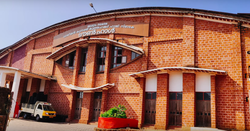Kottakkunnu Kottakkunnu Hill Station | |
|---|---|
Hill station | |
 Kottakunnu | |
| Coordinates: 11°02′53″N76°04′59″E / 11.048°N 76.083°E | |
| Country | |
| State | Kerala |
| District | Malappuram |
| Languages | |
| Time zone | UTC+5:30 (IST) |
Kottakkunnu is a hill station in Malappuram district of Kerala state, India. Widely known as Kotta Kunnu, it is situated at a height of 915 metres and is a popular tourist destination in the state of Kerala located at Malappuram. [1]






